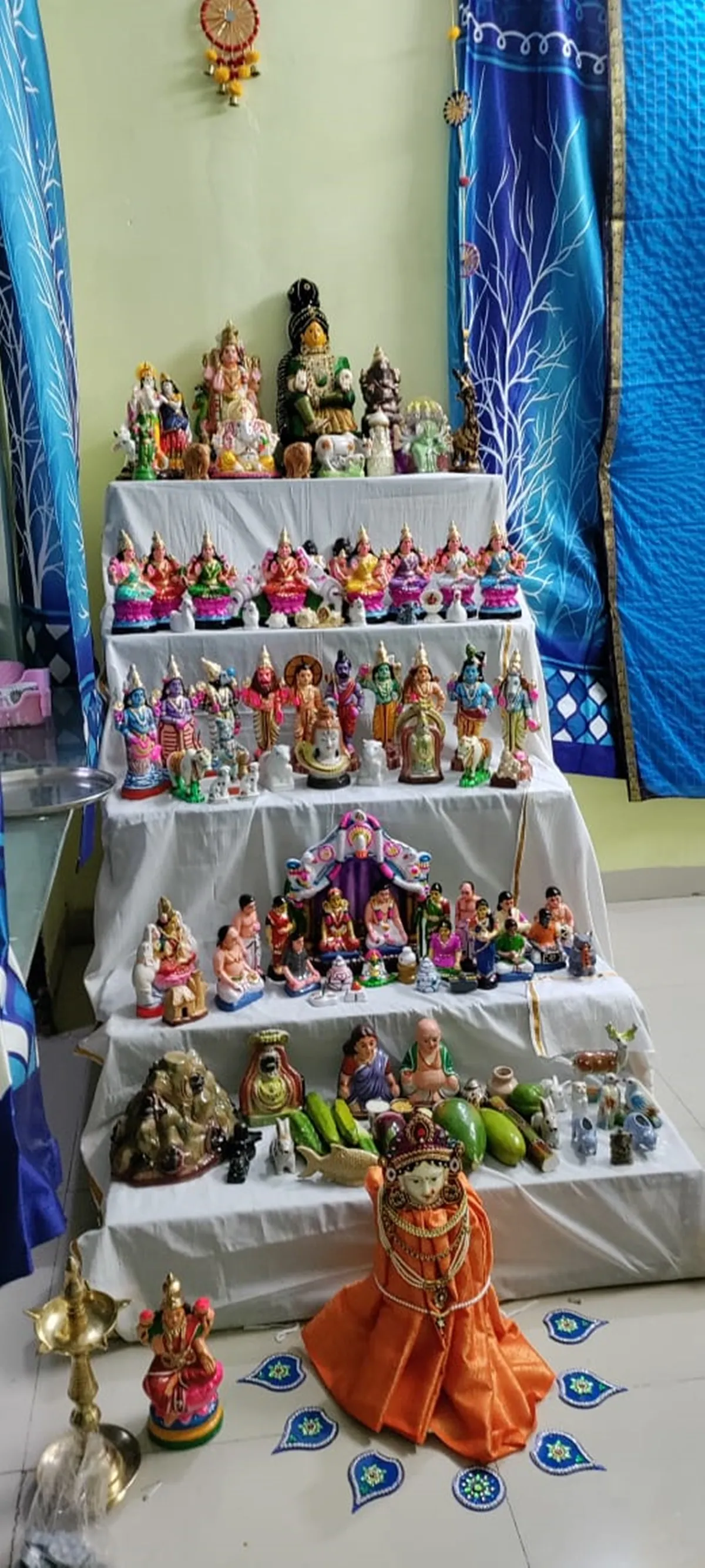 Navratri golu is set in many households (Source: Express Photo by Jayashree Narayanan)
Navratri golu is set in many households (Source: Express Photo by Jayashree Narayanan)There are many rituals associated with Navratri, or the nine nights dedicated to goddesses Lakshmi, Durga, and Saraswati. In north India, most people observe a fast, in the west, the festival is synonymous with Garba — a popular dance form, the east comes alive with Durga Puja celebrations and feasts. In a similar vein, Bommai Golu or the Navratri Golu — decorated display of dolls and figurines — is an integral part of the festivities in South Indian households. This year, starts Monday and ends on October 4. Vijaya Dashami or Dussehra will be celebrated on October 5, 2022.
In Tamil Nadu, Karnataka, and Andhra Pradesh, the festival includes placing dolls of a multitude of gods, goddesses, animals, men, and children on a step-like set-up. In Tamil, Bommai Golu or Kolu means ‘Divine Presence’, in Telugu, Bommala Koluvu means ‘Court of Toys’, and in Kannada, Bombe Habba means ‘Doll Festival’, noted ArtofLiving.org.
Golu consists of a makeshift staircase on which the dolls, which have been passed on from many generations are kept. Characters from Ramayana, Puranas, and Dashavataram are depicted. Golu also depicts particular themes like environment, space, mythology, current affairs, and more.
 Navratri golu is set on steps which are odd in number (Source: Express Photo by Jayashree Narayanan)
Navratri golu is set on steps which are odd in number (Source: Express Photo by Jayashree Narayanan) The numbers could vary from one to 11 but are mostly odd, depending on the number of dolls available for display. While many families place nine steps, each step representing the nine days of Navratri, some keep three, five or even seven. The steps are covered with a decorative cloth and the dolls are placed on it.
According to ArtofLiving.org, the first step is decorated with a kalash (ceremonial jar). The water-filled jar is decorated with a coronet of mango leaves, and a coconut is placed on top of it. It is considered to represent Goddess Durga. Idols of deities are placed on both sides of the kalash. According to tradition, the dolls of Goddesses Durga, Lakshmi, Saraswati and the wooden dolls called the Marapachi Bommai are always a part of the arrangement.
“The next few steps have idols of saints and heroes of the country. One of the steps represents human activities – depicting functions such as marriage, temples, and an orchestra or music band. Business is usually represented by the Chettiar set of dolls, with shop items and the Marapachi couple dressed in colorful clothes,” it read.
It is always a custom to add at least one new doll every year which represents progress and growth.
On the day of Amavasai or no moon day which falls on the eve of , the preparations start by setting up the steps which can be made of wood or even steel. It is followed by the decorations.
Families draw colourful kolams or rangolis, light lamps, perform aarti, recite shlokas (holy chants), and offer special dishes such as sundal which are made of legumes, with some delectable sweets and fruits every day. Married women and children, especially little girls, are specially called in homes each evening to see the golu. They are requested to also sing devotional songs in the honour of the goddess. They are then honoured by gifting betel leaves, coconuts, fruits, flowers, bangles, turmeric, kumkum, and prasad.
📣 For more lifestyle news, follow us on Instagram | Twitter | Facebook and don’t miss out on the latest updates!